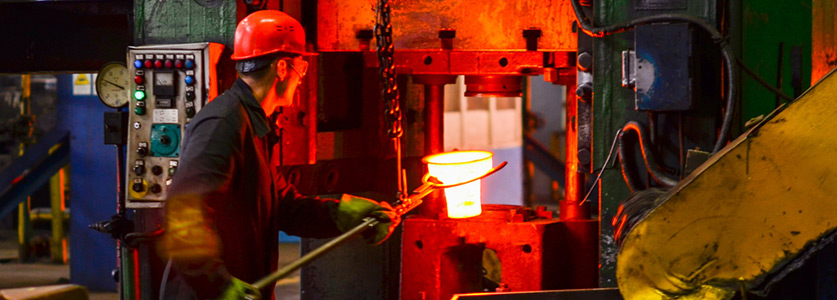Nitrogen Annealing – Purpose, Uses, Normalizing Difference
February 26, 2020
Your metal components are typically suited for a specific use. Whether they’re used in your manufacturing process or for end-user products, your metals will perform best when they meet certain standards for hardness, ductility, machinability.
Depending on your application, nitrogen annealing may be the best process for creating the perfectly suited metal.

What Is Annealing?
Annealing is a form of industrial heat treating used for reducing hardness and elevating the ductility of your material. These effects are achieved by reducing the amount of crystal structure dislocations in the material that you are annealing.
Purpose of Annealing
Reducing the hardness of a material means that you have reduced the risk of your material fracturing while it is under stress. If you’re annealing steel or some type of metal that will be subjected to machining, your tools will be put through less wear and tear.
Ductility is a material’s ability to plastically deform without breaking. Enhancing a material’s ductility through annealing is very useful for metals that will undergo coldworking (deforming a metal below its re-crystallization temperature – such as thread forming, thread rolling, crimping, metal spinning, etc.), as they are at a lower risk for fracturing in the process.
Because annealing reduces the crystal structure dislocations in your material, annealed materials are typically better conductors of electricity.
What Is an Annealing Furnace?
An annealing furnace is used to heat your material above its recrystallization temperature, maintain this temperature for a suitable amount of time, then cool it at a steady rate. Heating your material provides the energy required to break bonds so that atoms can redistribute and eliminate dislocations before recrystallizing during the cooling process.
Annealing vs. Normalizing
Normalizing and annealing are very similar in that both processes involve heating a material past its recrystallization temperature. The big difference between annealing and normalizing is that normalizing does not use an annealing furnace for controlled cooling. Your material is left to cool at room temperature after the heating process.
Normalizing a material will not reduce its hardness or increase its ductility to the same degree that annealing it would have. However, this process is often used to create those same properties without the added energy expense of using the annealing furnace for controlled cooling.
Nitrogen Annealing
Nitrogen annealing refers to the atmosphere within an annealing furnace during the heating and cooling process. The purpose of the atmosphere within an annealing furnace depends on your desired result. Oxygen is reactive and can cause material oxidation, which makes nitrogen annealing a more attractive option for an inert atmosphere.
Nitrogen Annealing Uses
Before annealing, it’s common to use some form of nitrogen purging before the heating process takes place. Nitrogen flushing is used to evacuate atmospheric air until there is less than 1% oxygen present.
A 100% nitrogen gas atmosphere is rarely used in annealing. Blended nitrogen-hydrocarbon (like propane, propylene, and methane), nitrogen-methanol, and mixed nitrogen-hydrogen atmospheres are more common, and are used to anneal the following tools:
- Screws
- Springs
- Industrial needles
- Components for bearings
- Chainplates
- Saw blades
Different non-ferrous metals (in addition to steel) like copper, aluminum, and brass can use nitrogen annealing.
Nitrogen annealing helps during the decarburization process for these steel materials. Other heat treating processes that are related to annealing also use a nitrogen atmosphere. These include:
- Nitriding – used to increase hardness and corrosion resistance
- Carbonitriding – used to increase hardness
- Bright annealing – hydrogen-nitrogen blends are used to reduce oxides on wire surfaces
- Neutral hardening – used to prevent decarburization and oxidation for steel tools
- Tempering
- Sintering
- Brazing
Contact GENERON for On-site Nitrogen Generation Solutions
GENERON has worked for decades to improve the safety and cost-effectiveness of using nitrogen gas in your industrial processes. Our on-site nitrogen generators reduce the need for high-pressure container transportation and storage. This helps diminish your carbon footprint and improve your worksite safety in the process.
Our industrial nitrogen generators can use either PSA or Membrane technology depending on your application. Contact us today for more information or to get a quote!
